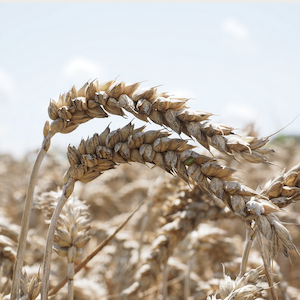Beneficial interaction of allelopathic bacteria with chemical herbicides for sustainable wheat (Triticum aestivum L.) production under wild oat (Avena fatua L.) infestation

HTML: 103
All claims expressed in this article are solely those of the authors and do not necessarily represent those of their affiliated organizations, or those of the publisher, the editors and the reviewers. Any product that may be evaluated in this article or claim that may be made by its manufacturer is not guaranteed or endorsed by the publisher.
Weeds are one of the major limiting factors for wheat production. So, a study was conducted to integrate allelopathic bacteria with a reduced dose of chemical herbicide for sustainable wheat production in wild oat infestation. Cyanide-producing Pseudomonas strains were applied in 4 combinations with and without 2 chemical herbicides (Axial and Atlantis) at the 25% and 50% recommended doses under axenic conditions. Results showed that the C4 bacterial combination (combination of B11×T19×T24×T75 bacterial strains) significantly reduced the growth and development of wild oat under 50% Axial while increasing wheat growth. Subsequently, C4 combination and Axial herbicide were selected for field evaluation, where they reduced the weed density (82.1%), soil plant analysis development (SPAD) value (26.0%), grain yield (88.2%) under 75% Axial, relative wild oat density (70.9%), photosynthetic rate (26.6%), and transpiration rate (25.6%) under 50% Axial in wild oat. While the C4 combination improved SPAD value (26.9%), shoot length (10.1%), tillering (33.3%), biological yield (32.7%), straw yield (24.4%), grain yield (46.8%), transpiration rate (9.6%), and stomatal conductance (14.7%) in wheat under 75% Axial. The increase in growth and yield of wheat was found to be similar to C4 under 50% and 75% Axial. Thus, it is concluded that allelopathic bacteria could be used with 50% Axial for sustainable wheat production under wild oat.
How to Cite

This work is licensed under a Creative Commons Attribution-NonCommercial 4.0 International License.
PAGEPress has chosen to apply the Creative Commons Attribution NonCommercial 4.0 International License (CC BY-NC 4.0) to all manuscripts to be published.

 https://doi.org/10.4081/ija.2023.2193
https://doi.org/10.4081/ija.2023.2193



